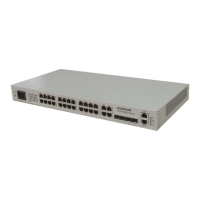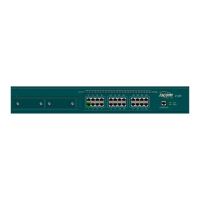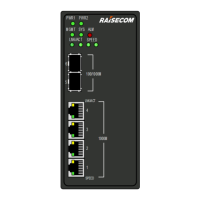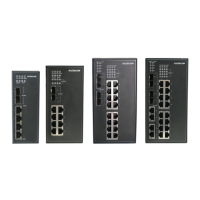Raisecom
ISCOM2600G-HI (A) Series Configuration Guide
Raisecom Proprietary and Confidential
Copyright © Raisecom Technology Co., Ltd.
device. The one that fails will be restarted (by default, automatic device restart upon ISF
merge or ISF split is enabled) and then join the ISF as a backup device or slave device
(due to lower priority or shorter running time). The MAC address of the ISF is that of the
master device. You can configure MAC address synchronization between ISF devices.
By default, MAC address synchronization is disabled.
After ISF merge is complete, the MAC address of the ISF is that of the master device, and
backup device and slave devices just forward management packets and protocol packets to the
master device.
After the ISF runs stably, the master device will back up configurations in batches by issuing
its configurations to the backup device and slave devices to synchronize configurations.
After batch backup is complete, realtime backup will start; in other words, the master device
processes services while the backup device and slave devices back up data and configurations
of the master device. The ISF adopts strict synchronization to reliably issue data and
configurations to the backup device and slave devices. In this way, when the master device
fails, the backup device will replace it within 15s to improve system stability.
ISF split
ISF split occurs under the following conditions:
Two neighboring devices periodically send heartbeat packets to each other. If a device
fails to receive heartbeat packets from its neighbor for multiple periods (usually 16
periods), it considers that the neighbor has left the ISF. Thus new topology will form.
If a stack interface in the ISF becomes Down, the ISF will re-elect members to form a
new topology. If the master device leaves, the ISF will elect the backup device as the
master device preferentially. If the backup device leaves, the ISF will elect a slave device
as the backup device. If a slave device leaves, roles of other devices will remain the same.
After ISF split is complete, two connected devices will delete related physical interfaces of
each other and become independent. Then, they do not need to be restarted or reconfigured.
After ISF split is complete, its MAC address will be those of each device. The original backup
device and slave devices will not forward management packets and protocol packets to the
original master device.
3.2.4 ISF management and maintenance
After role election is complete, an ISF has formed. All member devices form a virtual device
on the network, and their resources are possessed by the virtual device and managed by the
master device.
Member ID
When working, an ISF uses member IDs to identify and manage member devices. For
example, the interface ID in the ISF is used in the member ID. When a switch works in
standalone mode, the ID of an interface changes (such as from tengigabitethernet 1/1/1 to
tengigabitethernet 2/1/1). Thus, you must guarantee uniqueness of all member IDs, otherwise
the ISF will fail to form.
Maintaining ISF topology
If member device A becomes Down or an ISF link becomes Down, its neighbor devices will
broadcast the message that member device A leaves to other member devices in the ISF. These

